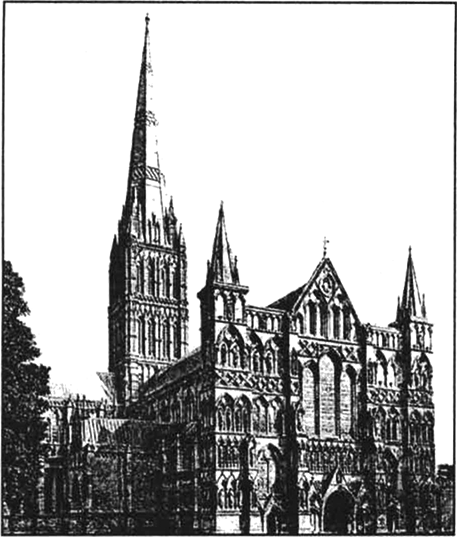Write a brief note on political changes in Europe during 15th and 16the Centuries.
Developments in the political sphere paralleled social processes. In the fifteenth and sixteenth centuries, European kings strengthened their military and financial power.
i. The powerful new states they created were as significant for Europe as the economic changes that were occurring. Historians have therefore called these kings ‘the new monarchs’. Louis XI of France, Maximilian in Austria, Henry VII in England and Isabelle and Ferdinand in Spain were absolutist rulers, who started the process of organising standing armies, a permanent bureaucracy and national taxation and, in Spain and Portugal, began to play a role in Europe’s expansion overseas.
ii. The most important reason for the triumph of these monarchies was the social changes which had taken place in the twelfth and thirteenth centuries. The dissolution of the feudal system of lordship and vassalage and the slow rate of economic growth had given the first opportunity to kings to increase their control over their powerful and not-so-powerful subjects.
1. Instead of the basic wooden ploughs, cultivaros began using heavy iron-tipped ploughs and mould-boards. These ploughs could dig much deeper and the mould-boards turned the topsoil properly. With this the nutrients from the soil were better utilised.
2. The methods of harnessing animals to the plough improved. Instead of the neck-harness came into use. This enabled animals to exert greater power. Horses were now better shod, with iron horseshoes, which prevented foot decay.
There was increased use of wind and water energy for agriculture. More water-powered and wind-powered mills were set up all over Europe for purposes like milling corn and pressing grapes.
3. There were also changes in land use. The most revolutionary one was the switch from a two-field system. In this, peasants could use a field two years out of three if they planted it with one crop in autumn and a different crop in spring a year and a half later.
That meant that farmers could break their holdings into three fields. They could plant one with wheat or rye in autumn for human consumption.
The second could be used in spring to raise peas, beans and lentils for human use, and oats and barley for the horses. The third field lay fallow. Each year they rotated the use among the three fields.
With these improvements, there was an almost immediate increase in the amount of food produced from each unit of land. Food availability doubled. The greater use of plants like peas and beans meant more vegetable proteins in the diet of the average European and a better source of fodder for their animals.
For cultivators, it meant better opportunities. They could now produce more food from less land. The average size of a peasant’s farm shrank from about 100 acres to 20 to 30 acres by the thirteenth century.
Holdings which were smaller could be more efficiently cultivated and reduced the amount of labour needed. This gave the peasants time for other activities.
4. Some of these technological changes cost a lot of money. Peasants did not have enough money to set up watermills and windmills. Therefore the initiative was taken by the lords. But peasants were able to take the initiative in many things, such as extending arable land.
They also switched to the three-field rotation of crops, and set up small forges and smithies in the villages, where iron-tipped ploughs and horseshoes were made and repaired cheaply.
2. Cathedrals were designed so that the priest’s voice could be heard clearly within the hall where large numbers of people gathered, and so that the singing by monks could sound beautiful and the chiming bells calling people to prayer could be heard over a great distance.
Fig.: Salisbury cathedral England
3. Stained glass was used for windows. During the day the sunlight would make them radiant for people inside the cathedral, and after sunset the light of candles would make them visible to people outside.
The stained glass windows narrated the stories in the Bible through pictures, which illiterate people could ‘read’.
Describe the mayhem caused by the rats that had come with the ships.
Along with the ships came rats carrying the deadly bubonic plague infection, the ‘Black Death’.
i. Western Europe, relatively isolated in earlier centuries, was hit by the epidemic between 1347 and 1350. The modern estimate of mortality in that epidemic is that 20 per cent of the people of the whole of Europe died, with some places losing as much as 40 percent of the population.
ii. As trade centres, cities were the hardest hit. In enclosed communities like monasteries and convents, when one individual contracted the plague, it was not long before everyone did. And in almost every case, none survived. The plague took its worst toll among infants, the young and the elderly.
iii. There were other relatively minor episodes of plague in the 1360s and 1370s. The population of Europe, 73 million in 1300, stood reduced to 45 million in 1400.
2. Contribution in the Field of Drama: In the Medieval age very few people could read. There was very little to read as books were almost scarce. Therefore drama became the most powerful medium of education.Plays in the local dialects were written to entertain as well as to educate the people who did not know Latin.
These plays were of two types:
(i) Miracle Plays: Which enacted scenes of the lives of saints.
(ii) Morality Plays: Which usually depicted the struggle between good and bad.
